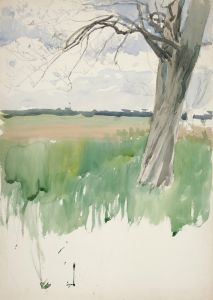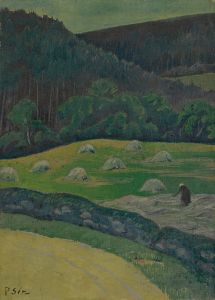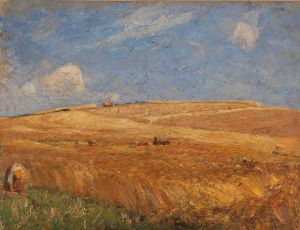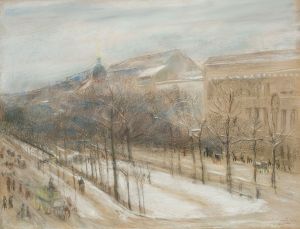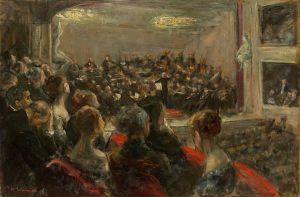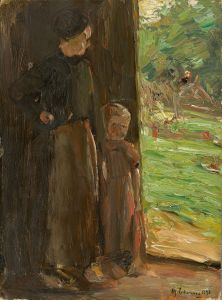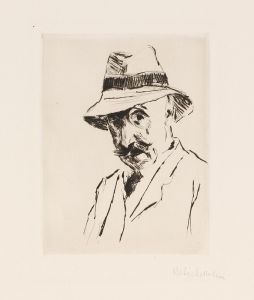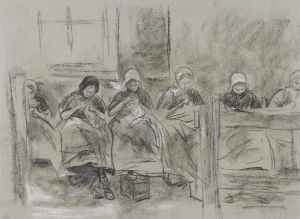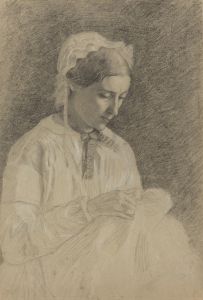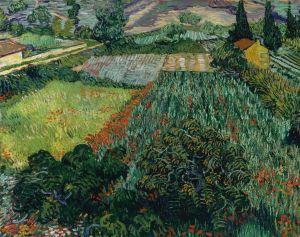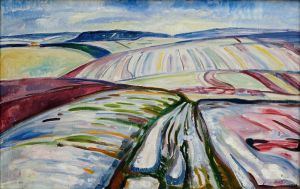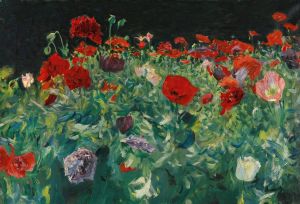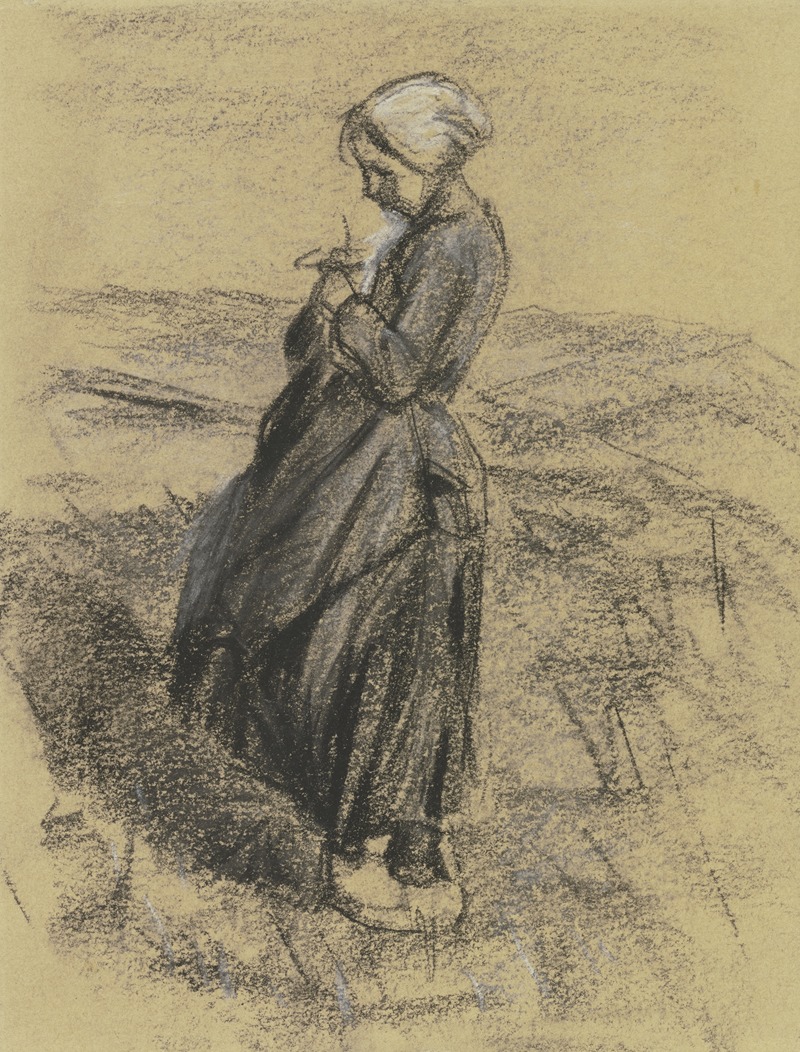
Mädchen auf dem Felde, strickend
A hand-painted replica of Max Liebermann’s masterpiece Mädchen auf dem Felde, strickend, meticulously crafted by professional artists to capture the true essence of the original. Each piece is created with museum-quality canvas and rare mineral pigments, carefully painted by experienced artists with delicate brushstrokes and rich, layered colors to perfectly recreate the texture of the original artwork. Unlike machine-printed reproductions, this hand-painted version brings the painting to life, infused with the artist’s emotions and skill in every stroke. Whether for personal collection or home decoration, it instantly elevates the artistic atmosphere of any space.
Mädchen auf dem Felde, strickend (Girls Knitting in the Field) is a painting by the renowned German artist Max Liebermann. Created in 1887, this work exemplifies Liebermann's transition from his earlier, more somber Realist style to a lighter, more Impressionistic approach. The painting is a significant piece within Liebermann's oeuvre, reflecting his keen interest in rural life and the daily activities of ordinary people.
Max Liebermann (1847-1935) was a leading figure in the German art world and a prominent member of the Berlin Secession, an association of artists who sought to break away from the conservative academic standards of the time. Liebermann's work is often associated with the Realist and Impressionist movements, and he is celebrated for his depictions of laborers, farmers, and other rural subjects.
In Mädchen auf dem Felde, strickend, Liebermann captures a serene and intimate moment of two young girls knitting in a sunlit field. The composition is characterized by its loose brushwork and the use of light and color to convey the atmosphere of the scene. The girls are seated on the ground, surrounded by tall grasses and wildflowers, with the sunlight filtering through the foliage to create dappled patterns on their clothing and the ground.
The painting reflects Liebermann's fascination with the simplicity and tranquility of rural life, as well as his skill in rendering natural light and outdoor settings. The choice of subject matter—a quiet, everyday activity—demonstrates Liebermann's interest in the dignity and beauty of ordinary people and their work. This focus on the mundane yet meaningful aspects of life is a hallmark of Liebermann's artistic vision.
Mädchen auf dem Felde, strickend is also notable for its composition and use of perspective. Liebermann employs a relatively low vantage point, which places the viewer at eye level with the girls and enhances the sense of intimacy and immediacy in the scene. The background is rendered with less detail, drawing attention to the figures and their activity while also suggesting the vastness of the surrounding landscape.
The painting is part of a broader body of work in which Liebermann explored similar themes and techniques. His interest in capturing the effects of natural light and his use of loose, expressive brushstrokes align him with the Impressionist movement, although his work often retains a stronger sense of structure and form than that of his French contemporaries.
Mädchen auf dem Felde, strickend is housed in the collection of the Alte Nationalgalerie in Berlin, Germany. The museum holds an extensive collection of 19th-century art, and Liebermann's work is prominently featured due to his significant contributions to German art and culture.
Overall, Mädchen auf dem Felde, strickend is a testament to Max Liebermann's ability to find beauty in the everyday and to convey the quiet dignity of rural life through his masterful use of light, color, and composition.





